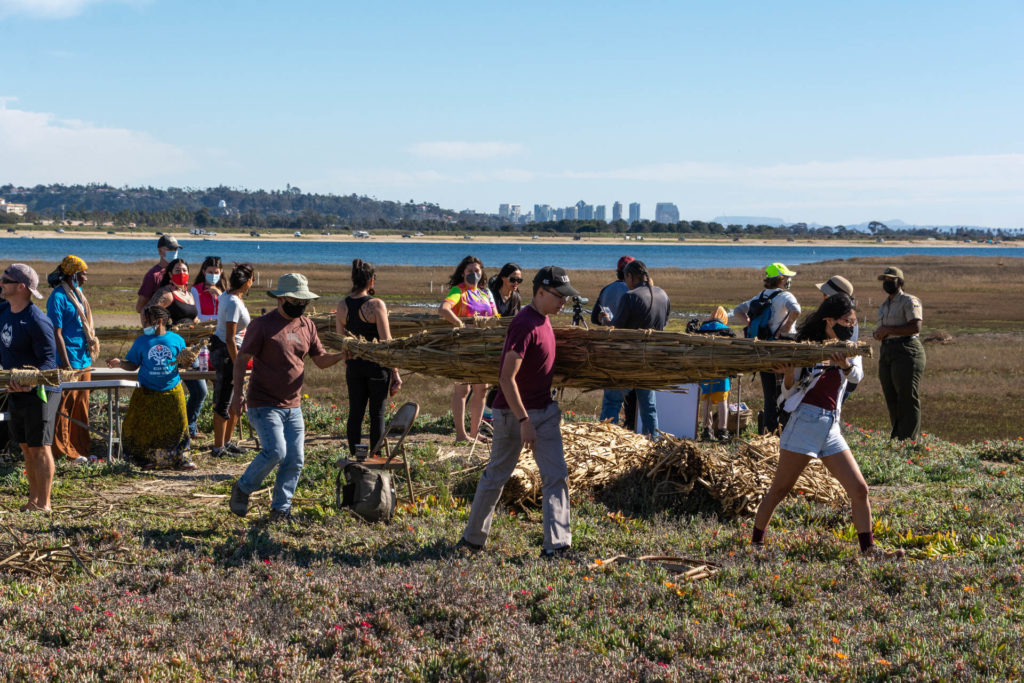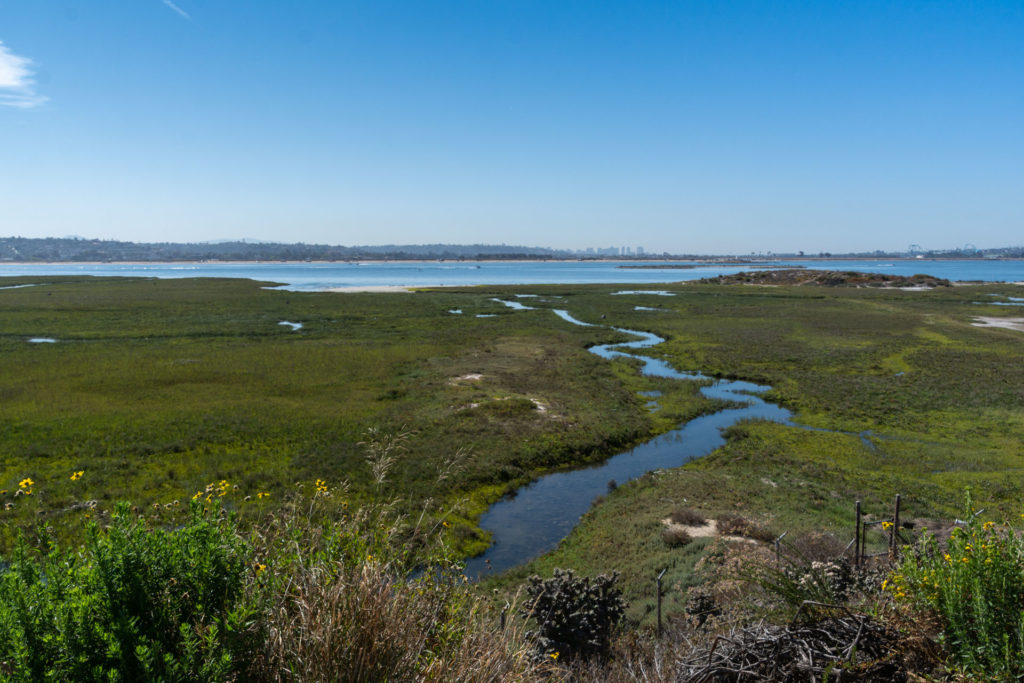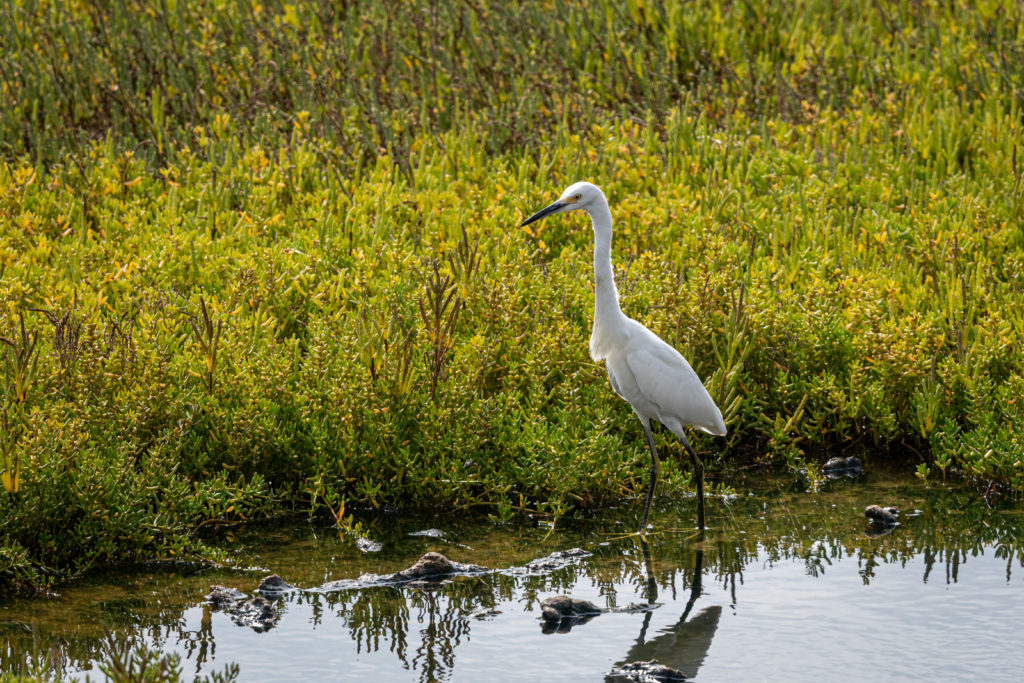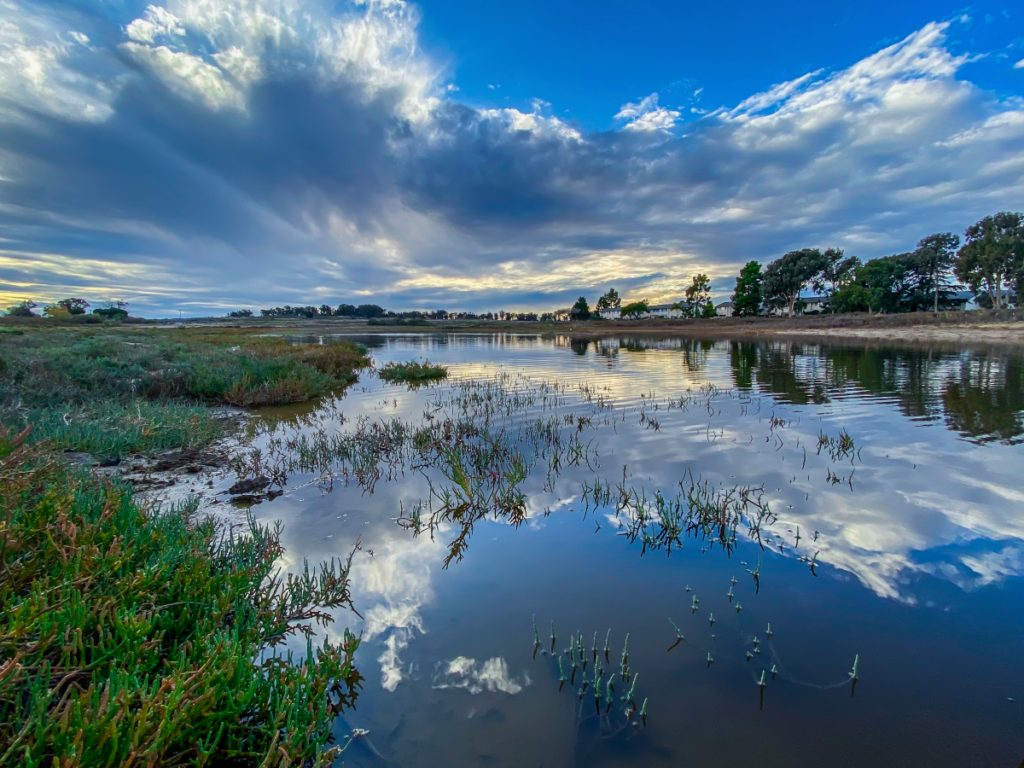Mission Bay De Anza Cove Restoration
The Mission Bay Restoration project aims to enhance and restore the natural wetlands in the northeast corner of Mission Bay, including Kendall-Frost Marsh and De Anza Cove. This project will conserve coastal habitats for endangered species and other critters, improve water quality, create new trails and paddling paths, and help prepare for future sea level rise.
About This Project
Who is proposing this project?
Lead Organization: San Diego Audubon Society
Website: https://www.sandiegoaudubon.org
Supporting organizations:
What is proposed?
The Mission Bay Restoration project aims to restore the natural wetlands, such as the Kendall-Frost Marsh, in the northeast corner of Mission Bay, a 4000-acre mosaic of wetland habitats near the mouth of the San Diego River. Decades of dredging and filling the bay has left us with very little remaining natural habitat. In fact, the northeast corner of Mission Bay represents the last 40 acres of salt marsh (around 1%) remaining of what Mission Bay used to include. This degradation has led to declining populations of the 144 bird species and 56 plant species that call Mission Bay home. Through habitat restoration and trail building, the project aims to provide new opportunities for native plants and wildlife to thrive, and for San Diegans to more fully enjoy nature and the natural habitats of our collective backyard.
San Diego Audubon’s 2018 ReWild Mission Bay Feasibility Study found that sea level rise will soon swallow Mission Bay’s remaining tidal wetlands, leaving communities vulnerable to the impacts of sea level rise, unless we take significant steps to restore them. Restoration of the wetlands will also restore critical fish and bird habitat, and sequester carbon in expanded marsh habitats.
Finally, the northeast corner of Mission Bay is land that was historically occupied and used by Indigenous communities, Kumeyaay (‘Iipay and Tipai), and the ReWild Mission Bay project seeks to create opportunities for Kumeyaay to reconnect to this area where they have lived and celebrated since time immemorial, and from which they were recently displaced.
Project Location
This project focuses on the northeast corner of Mission Bay. Main areas of concern include the ecological health of Kendall-Frost Marsh Reserve, Rose Creek, and De Anza Cove.
Why is this project on the 30×30 list?
This project works to achieve all three of San Diego 30×30’s primary goals: improving climate resiliency, protecting biodiversity, and increasing access to nature for all San Diegans, especially for historically marginalized communities and communities of color.
Wetlands are a crucial aspect of climate resiliency, as they are a major carbon sink. Additionally, wetlands protect shorelines and coastal communities from flooding. Restoring wetland habitats like those in Mission Bay will help prevent and mitigate the impacts of flooding as sea levels rise.
Mission Bay is also an important habitat for many bird, fish and plant species such as the endangered Ridgway’s Rail and Belding’s Savannah sparrow. The project seeks to restore critical fish and bird habitat that has been lost from Mission Bay in the last 100 years, which will also provide nursery habitats for commercially important fish species.
The Mission Bay De Anza Cove Restoration project also aims to return shoreline access to the public and draw visitors and economic support into the community through recreation and ecotourism. Where feasible, the project is considering building new trails, boat launches, and even a visitor center. The Rewild Coalition is also advocating for improved access to the Mission Bay area for Indigenous communities, Kumeyaay (‘Iipay and Tipai), who historically occupied the land.
Project Timeline
How will this project be completed?
This project has stalled due to a lack of funding from the City of San Diego, as well as a 2019 campsite leasing agreement between the City and Campland, an RV park in De Anza Cove, which postponed restoration projects for at least 5 years.
Outside of Kendall-Frost Marsh, the City of San Diego is in charge of the timeline. After being awarded funding for new land use planning in 2019, the City must present a land use plan to the City Planning Commission by 2024. The City released a Notice of Preparation for this effort in early 2022, which was open to public comments. As of September 2022, the City is drafting a programmatic environmental impact report (PEIR), which studies three plan alternatives for the De Anza Amendment to the Mission Bay Park Master Plan.
The ReWild Mission Bay Coalition and the San Diego Audubon Society have been active throughout this process in offering public comments and pressuring the City to prioritize wetland restoration in De Anza. Today, they continue to work to pressure the City to fund and commit to wetland restoration.






